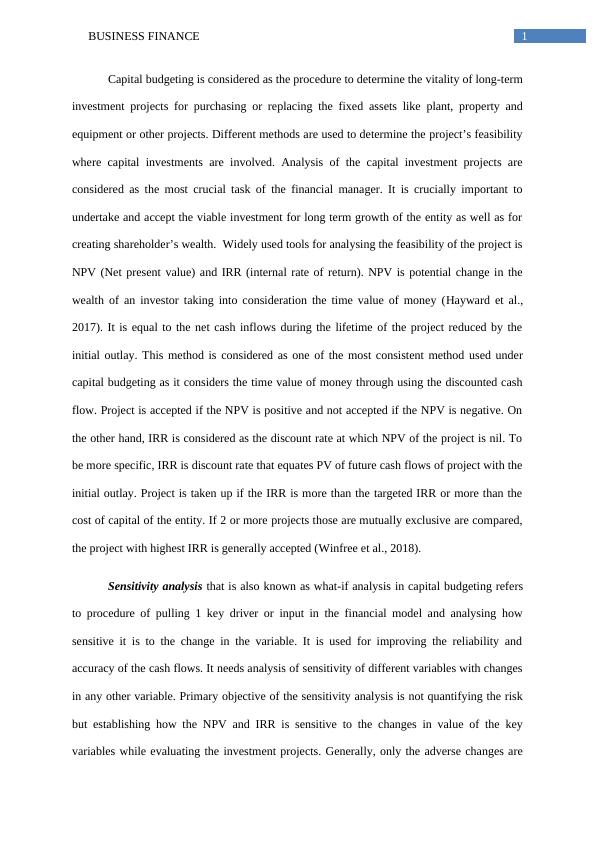Capital Budgeting: NPV and IRR Analysis
Added on 2023-04-19
5 Pages1191 Words369 Views
End of preview
Want to access all the pages? Upload your documents or become a member.
Capital Budgeting: Techniques and Analysis
|8
|1495
|366
Capital Budgeting Analysis of ‘Real Time Translator’ project of Auditizz Electronics
|10
|2053
|64
Feasibility Analysis of Developing a Site for Fangio Brothers Smash Repairs Pty Ltd
|4
|1071
|90
Corporate Finance : Assignment Sample
|5
|690
|15
Capital Budgeting - Techniques and Methods
|5
|681
|282
Acceptability Analysis of a new SSHA by Boo
|11
|1587
|461

